Scotland / Alba – Let’s explore here
What’s it like in Scotland?
Scotland is a magnificent part of the UK and has almost 800 islands! To quote the book and film ‘Trainspotting’: “It’s the great outdoors!“
Scotland is part of the United Kingdom, sitting north of England on the island of Great Britain. It’s an ancient country, having been settled at least since prehistoric times shortly after the retreat of the glaciers that covered the country. The Romans failed to conquer and hold on to Scotland and thus Hadrian’s wall close to the present Scottish border with England became the limit of their empire.
The capital of Scotland is Edinburgh and it’s also the second most visited city in the UK after London. Although Glasgow is the largest city whose metropolitan area is home to almost two million people (2020).
The north west of Scotland is home to some of the most beautiful mountainous landscapes in Europe, and the highest point is Ben Nevis, at 4,413 ft (1,345 m) above sea level.

A bit about the history of Scotland
Early History and Celtic Influence
Scotland’s history dates back to prehistoric times, with evidence of human settlement going back thousands of years. The early inhabitants were likely Celtic tribes who arrived in Scotland around 500 BC. These people formed distinct cultures and societies, including the Picts in the north and the Celts in the south. The Romans briefly invaded Scotland in the 1st century AD but did not manage to conquer the region, building Hadrian’s Wall to mark the boundary of their empire in the south of modern day Scotland.
Medieval Scotland and the Kingdom of Alba
By the early Middle Ages, the kingdom of Alba emerged in what is now Scotland. It was formed through the unification of various Celtic tribes, with Kenneth MacAlpin traditionally credited as the first king of Scotland in the 9th century. Over time, Scotland expanded its territories, incorporating other regions, including the Picts, the Scots from Ireland, and the Britons. The medieval period was marked by both internal struggles and external threats, notably from Viking invasions in the 8th and 9th centuries.
Scottish Independence and English Conflict
Scotland’s desire for independence became central during the 13th and 14th centuries. After the death of the Scottish king, Alexander III, in 1286, a succession crisis led to English interference under King Edward I. This sparked the Wars of Scottish Independence (1296-1357), with key figures such as William Wallace and Robert the Bruce leading the resistance. Robert the Bruce’s victory at the Battle of Bannockburn in 1314 was a turning point, and Scotland officially secured its independence after the Treaty of Edinburgh-Northampton in 1328.
Union with England
In the 16th and 17th centuries, Scotland faced political and religious upheaval. The Protestant Reformation in Scotland led to the establishment of Presbyterianism as the dominant religion, breaking away from the Catholic Church. The personal union between the crowns of Scotland and England occurred in 1603 when James VI of Scotland became James I of England. The two countries remained legally separate, but the union of the crowns helped align their political and economic interests. In 1707, the Act of Union united the kingdoms of Scotland and England to form Great Britain, creating a single parliament in Westminster. This was controversial in Scotland, with some opposing the loss of sovereignty.
Jacobite Rebellions
Throughout the 18th century, Scotland remained divided over its relationship with England. The Jacobite uprisings, which sought to restore the Stuart monarchy to the throne of Great Britain, were significant events in Scottish history. The most famous of these, the 1745 rebellion led by Charles Edward Stuart, was defeated at the Battle of Culloden in 1746, marking the end of the Jacobite cause and leading to the suppression of Highland culture and traditions.
Industrial Revolution and Social Change
The Industrial Revolution in the 18th and 19th centuries brought significant changes to Scotland. Cities such as Glasgow and Edinburgh became major centers of industry, particularly in shipbuilding, coal mining, and textiles. Scotland’s economy grew, but the rapid industrialisation also led to social challenges, including urban poverty and labour unrest. The period also saw significant emigration, with many Scots leaving for the Americas and other parts of the British Empire.
20th Century and the Rise of Scottish Nationalism
The 20th century saw the rise of Scottish nationalism, with calls for greater autonomy or independence. Scotland’s relationship with England became a central issue, especially following the 1979 referendum on devolution, which was narrowly defeated. However, the push for self-governance continued, and in 1997, a referendum resulted in the establishment of the Scottish Parliament in Edinburgh, granting Scotland devolved powers over domestic affairs.
Modern Scotland
In recent decades, Scotland has continued to debate its status within the United Kingdom. In 2014, a referendum on Scottish independence was held, where 55% voted to remain in the UK, though the issue of independence remains a central political topic. Scotland continues to have its own distinct culture, education system and legal structure. Today, Scotland remains part of the United Kingdom, but it has a significant degree of political autonomy. It is an important cultural, economic and political entity within the UK and continues to play a key role in discussions about the future of the union.
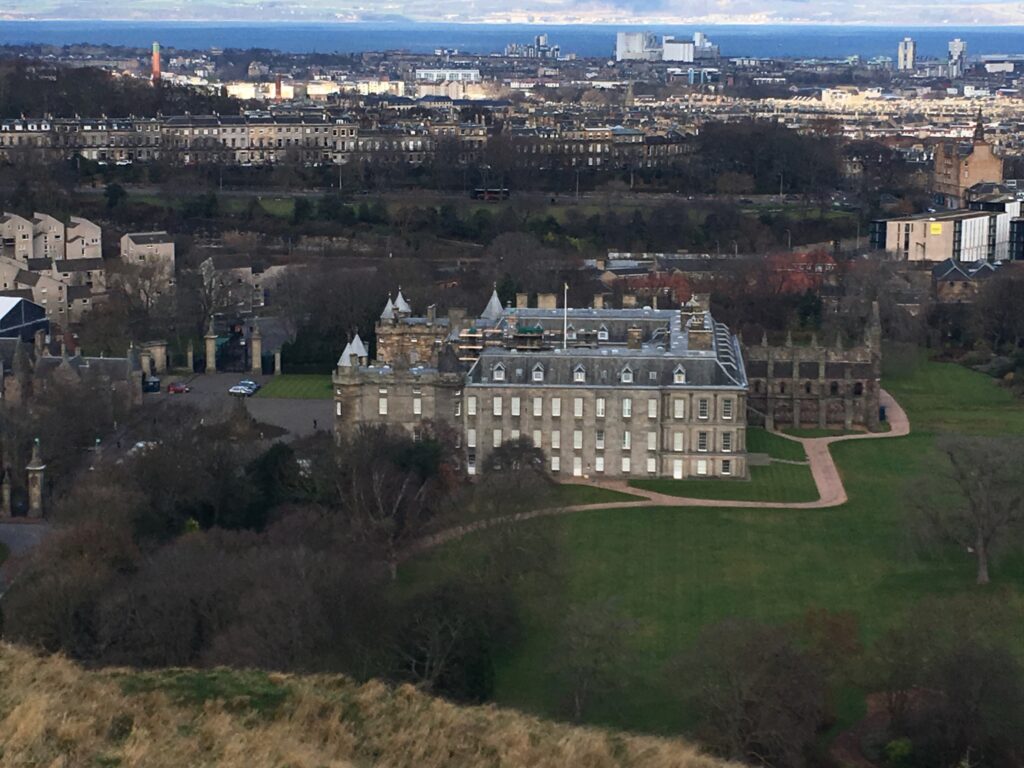
Road trips in the Scotland
The Cairngorms
The Cairngorms is the UKs largest national park. The stunning mountain range is located in the east of Scotland, in the Scottish Highlands. In addition to the amazing views, there’s loads of wildlife that you don’t often sea in other parts of the country.
Our route through the Cairngorms is around 285 miles (455 km) long, and takes you through all of the best parts of the national park, including the full length of the famous snow road.
Map of our road trip through the Cairngorms
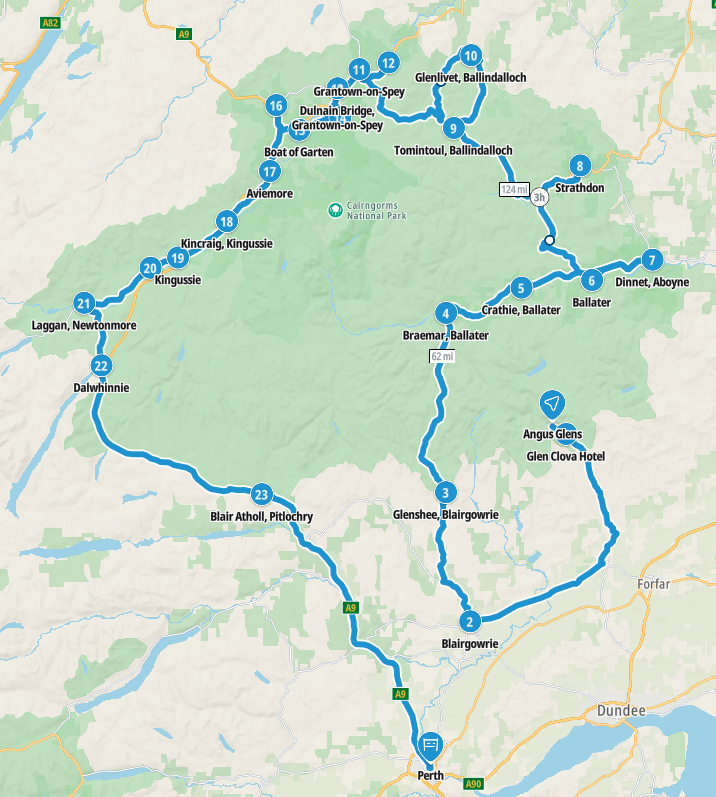
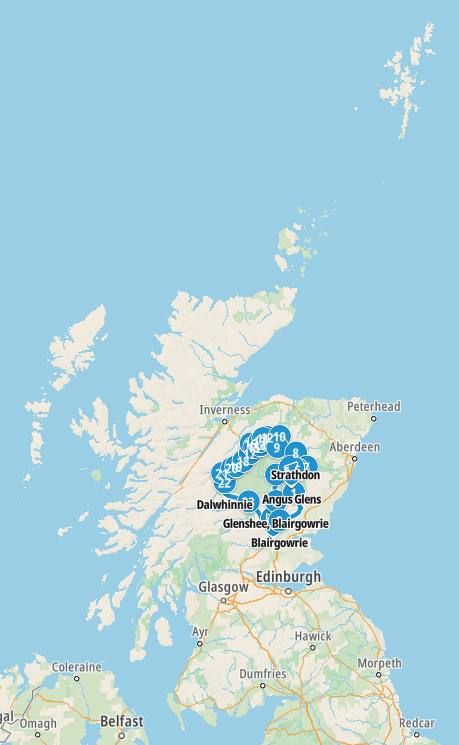
The North Coast 500
The North Coast 500 is a beautiful 516 mile (830 km) road trip around much of the coastline of Scotland, starting and ending in Inverness. The route is also known as the NC500 and was launched in 2015 by the Tourism Project Board of the North Highland Initiative.
Most people travel the route in a clockwise direction in our experience, although both directions offer magnificent views. There are loads of places to stay, including many great campsites, and it’s mostly very affordable.
There are so many fantastic places on the NC500 it’s incredible. Some are as good as it gets anywhere in Europe.
Map of the North Coast 500

The North Coast 500, plus Skye and the east coast of Scotland
Expanding the NC500 route to include the Isle of Skye is also a popular option due to Skye’s proximity and beauty. We went a step further and included the east coast of Scotland too, due to family connections in the area.
Map of our road trip through Scotland
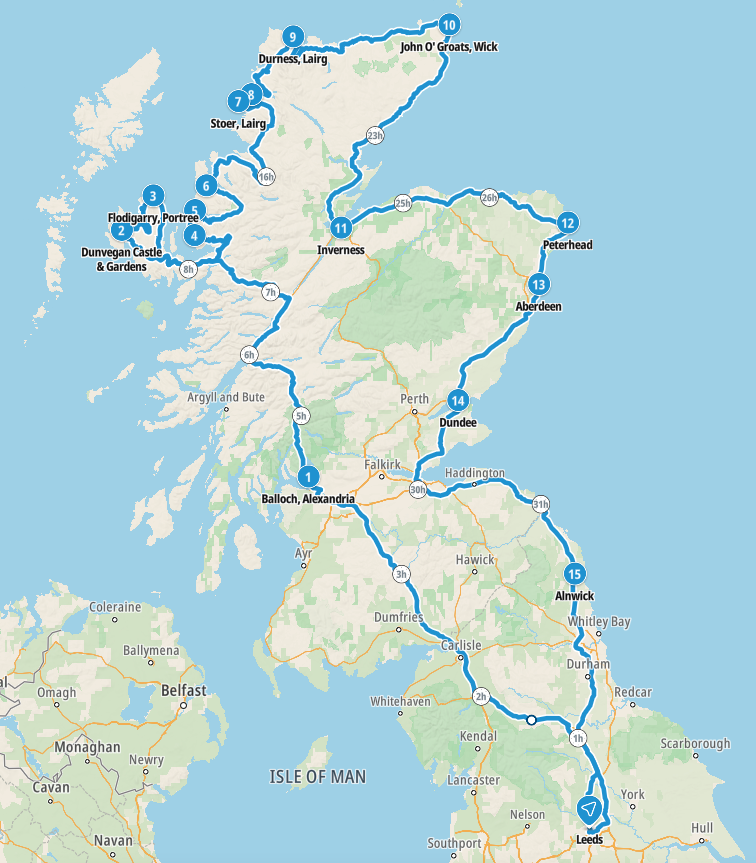
We completed our magnificent travels on the North Coast 500 in Spring 2024, also taking in Loch Lomond, the Isle of Skye, the east coast of Scotland and Northumbria in England.
Our favourite places in Scotland
These are some of the best places that we explored on our road trip through Scotland. We’ve put them in alphabetical order.
Ardvreck Castle & Calda House
Ardvreck Castle, more accurately described as the ruins of Ardvreck Castle, is located in western Scotland next to Loch Assynt. It was built in the 15th century. Calda House was built nearby in the 18th century, but unfortunately it was destroyed by fire after only 11 years. The area in which they stand is very beautiful to behold and is well worth a visit.


Applecross beach
Applecross beach is located on the west coast of Scotland, next to the lovely village of Applecross, on one of the most spectacular peninsulas in the UK.


Bealach na Ba
Bealach na Ba is a winding mountain pass that traverses through the magnificent Applescross peninsula. It’s located in the west of Scotland and is one the most scenic roads in the UK. It has the greatest ascent of any road in the UK, rising from sea level at Applecross to 2,054 ft (626m) in 3.7 miles (6km). It is also the third highest road in Scotland.






Banff
Banff is la lovely little town ocated in north eastern Scotland in Aberdeenshire. The bay at Banff contains a very pretty and mostly quiet beach 🙂


Ben Nevis
Ben Nevis is the highest mountain in the UK, at 4,413 ft (1,345m) above sea level. It’s located in western Scotland, near to Fort William. It is actually the the collapsed dome of an ancient volcano. It’s very popular amongst climbers and hikers of all abilities, and attracts huge amounts of visitors every year.
When we ascended it last time, it was a balmy day at the base, and fine weather most of the way up, whereas the top was like being on an inhospitable super windy, horizontal-rainy, planet!! Be prepared with appropriate clothing and footwear, as the weather can change quickly on the mountain.

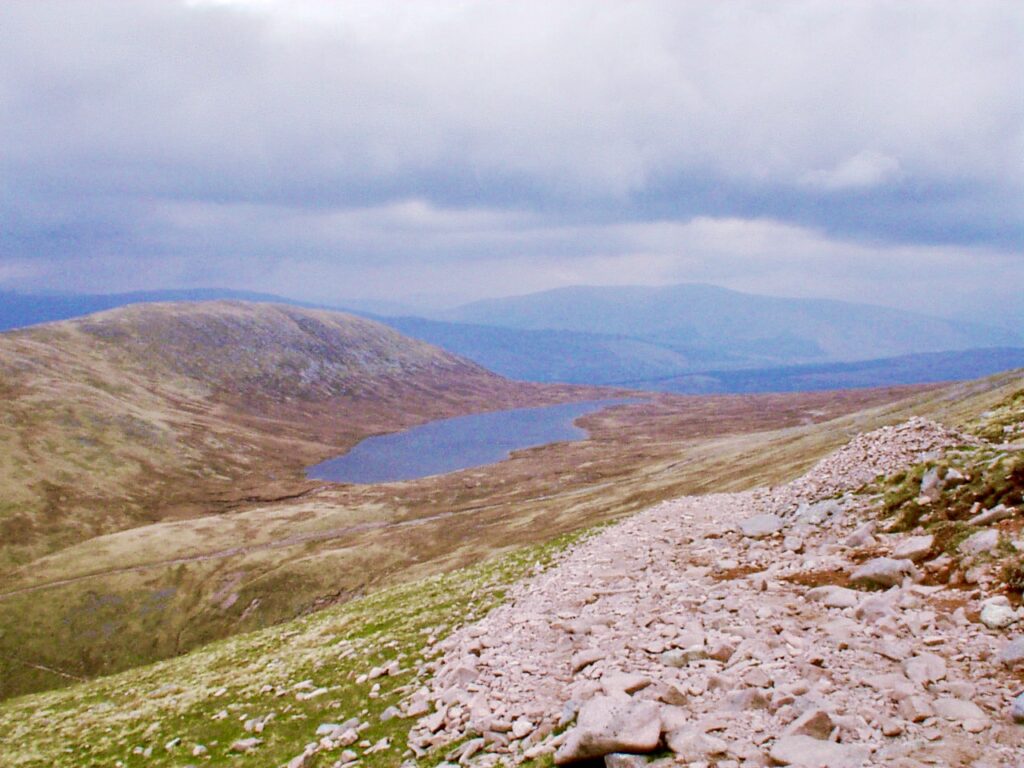
Caerlaverock castle, Dumfries
Caerlaverock castle is a lovely, well preserved castle, built in the 13th century, and located near to Dumfries in the south of Scotland. Bizarrely it is triangular in shape, being the only one of its type in the UK. It also has a moat, which is unusual for Scottish castles.
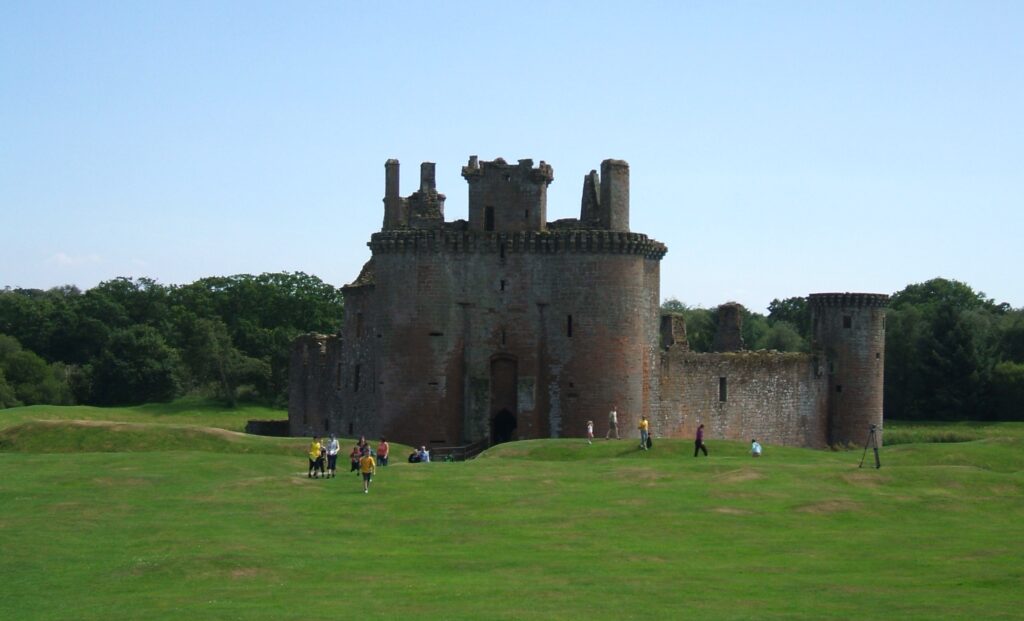

Ceannabeinne Beach
Ceannabeinne Beach is a beautiful sandy beach on the northern coast of Scotland. As with many beaches in tis remote area of Scotland, it’s mainly untouched and rarely visited, as such you can have it all to yourself!


Clashnessie Bay
Clashnessie Bay is situated on the north western coast of Scotland, near to Assynt. The beach itself is stunning, particularly on a sunny day, and empty 🙂

Colinsburgh, Fife
Colinsburgh is a pretty hamlet near to St Andrews on the east coast of Scotland. There are also number of great beaches in the area that are well worth a visit.


Cuaig
Cuaig is a beautiful area on the west coast of Scotland. The NC500 runs through the area. The peninsula of South Rona, in the Inner Hebrides can be seen from the coast.

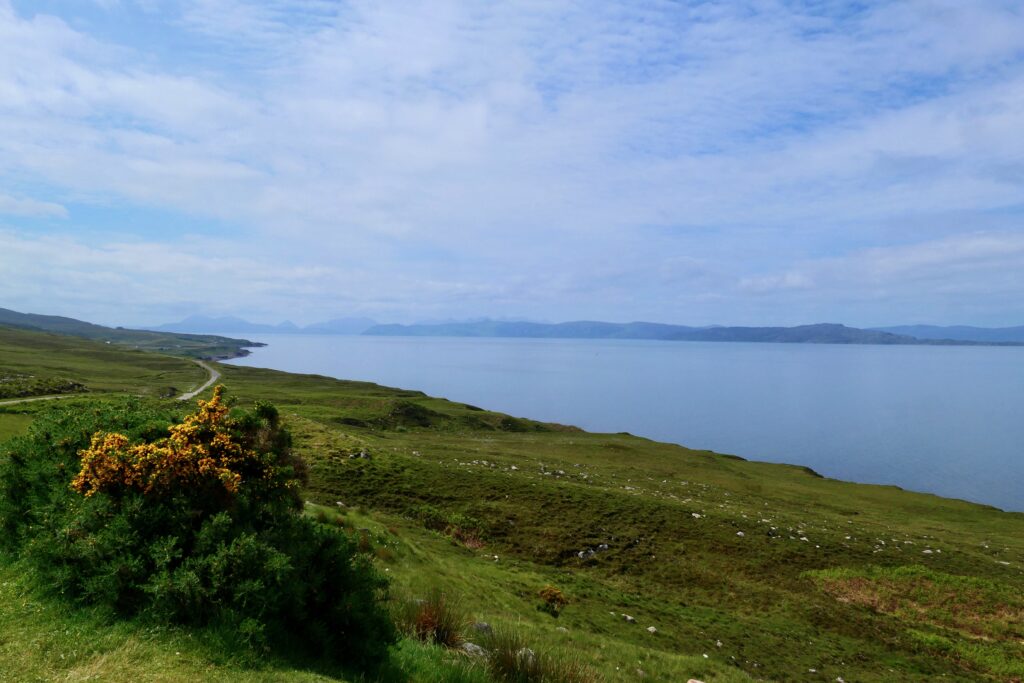

Drumbeg
Drumbeg is a tiny village o the north west coast of Scotland. The whole area is stunningly beautiful and well worth a visit.

Dunoon
Dunoon is a great town in the west of Scotland on the Coral peninsula. As well as being on the Firth of Clyde, it’s also beside the Holy Loch. The town is the focal point for many of the surrounding villages, and is thus often bustling with visitors. It’s a great place to stay, as it’s so close to so many other outstanding locations.




Durness
Durness is a very pretty village in a stunningly beautiful, but very remote location on the northern coast of Scotland. The beaches are spectacular and mostly empty 🙂

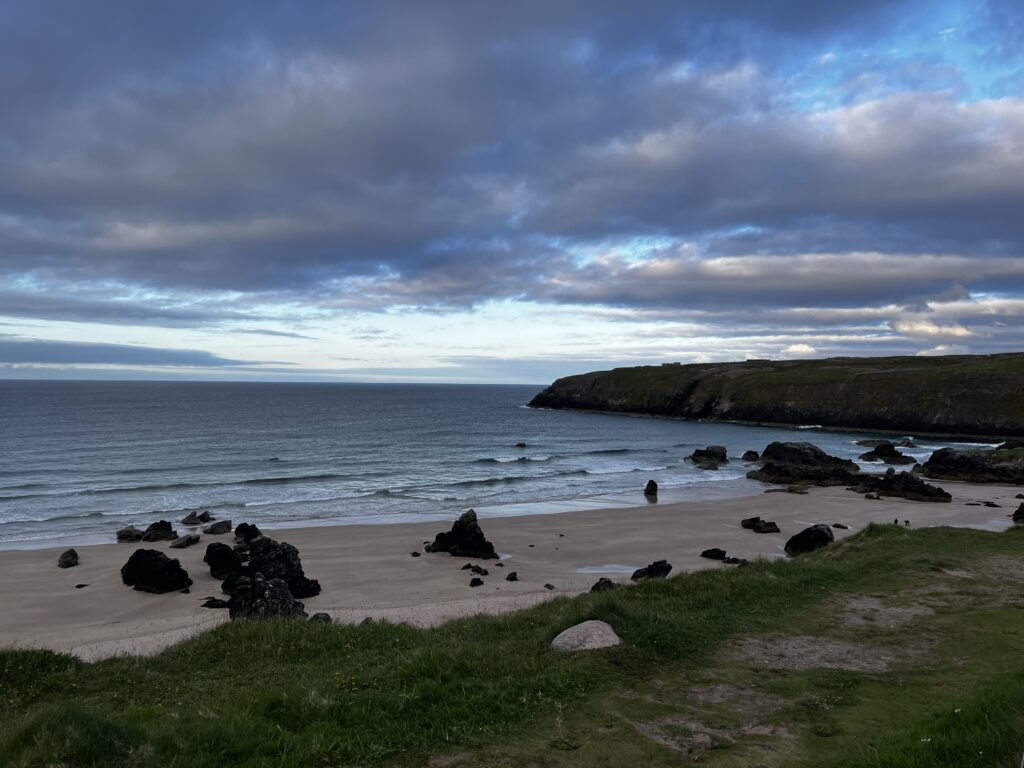

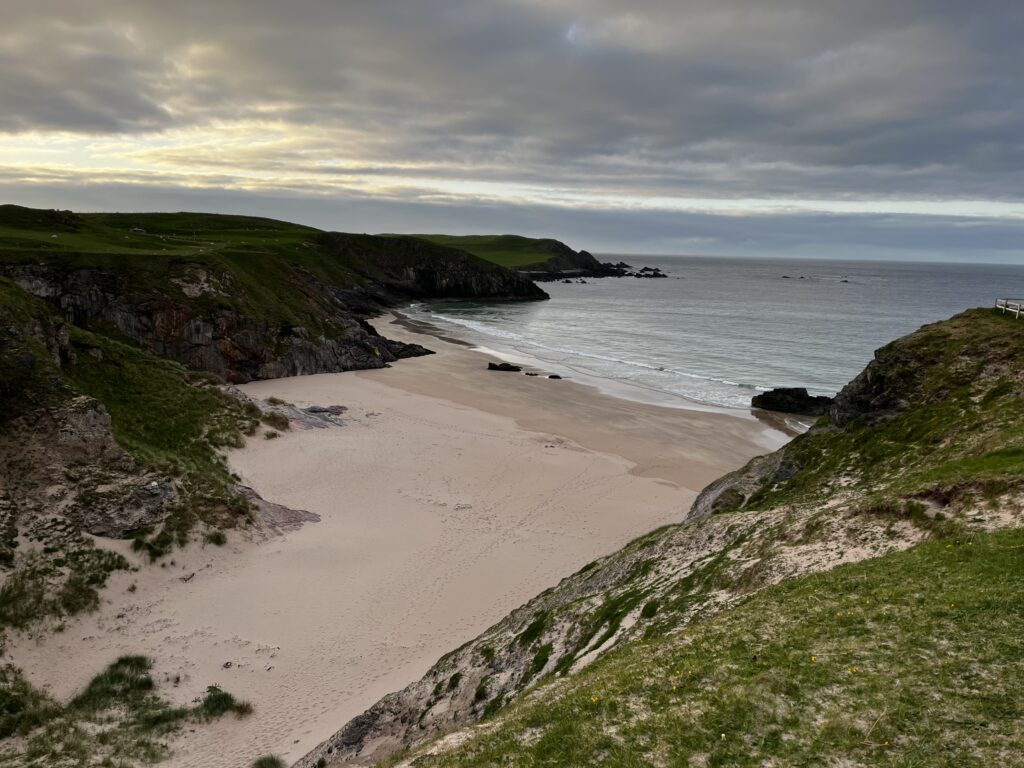
Edinburgh
Edinburgh is the capital of Scotland, and has a population of over half a million in the city alone. There are three universities, providing a vibrant feel to the city. Additionally its a very popular tourist destination, with its magnificent castle, and being am amazing cultural hotspot. As a UNESCO world heritage site, it is the second most visited place in the UK, attracting five million tourists every year.
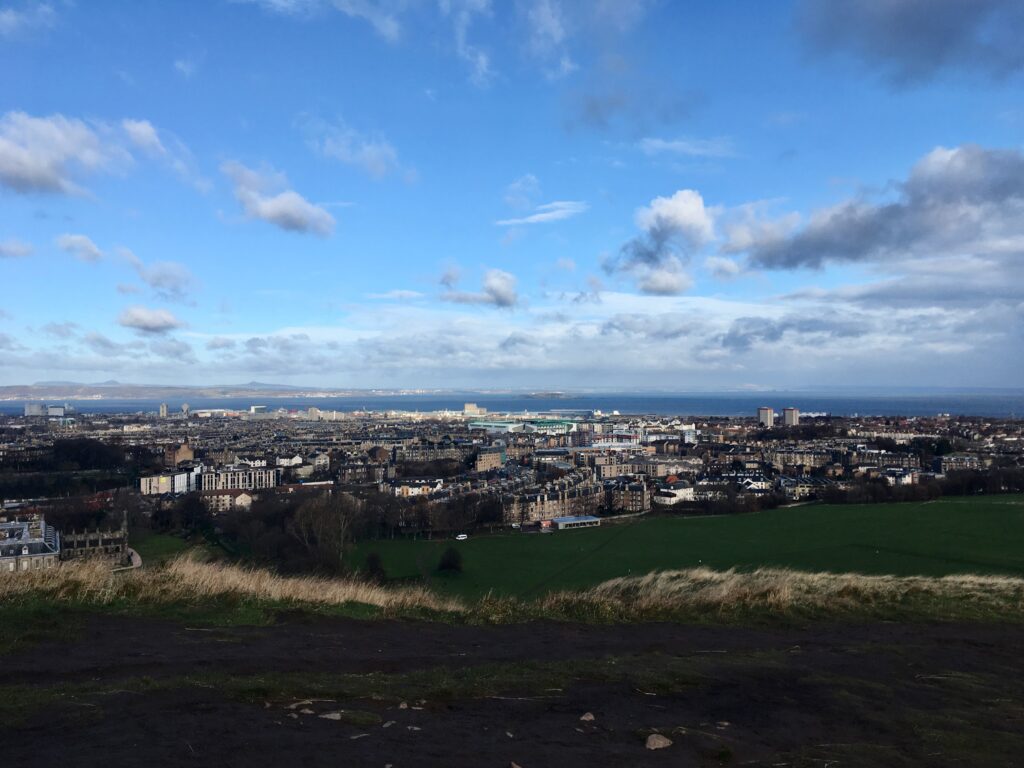
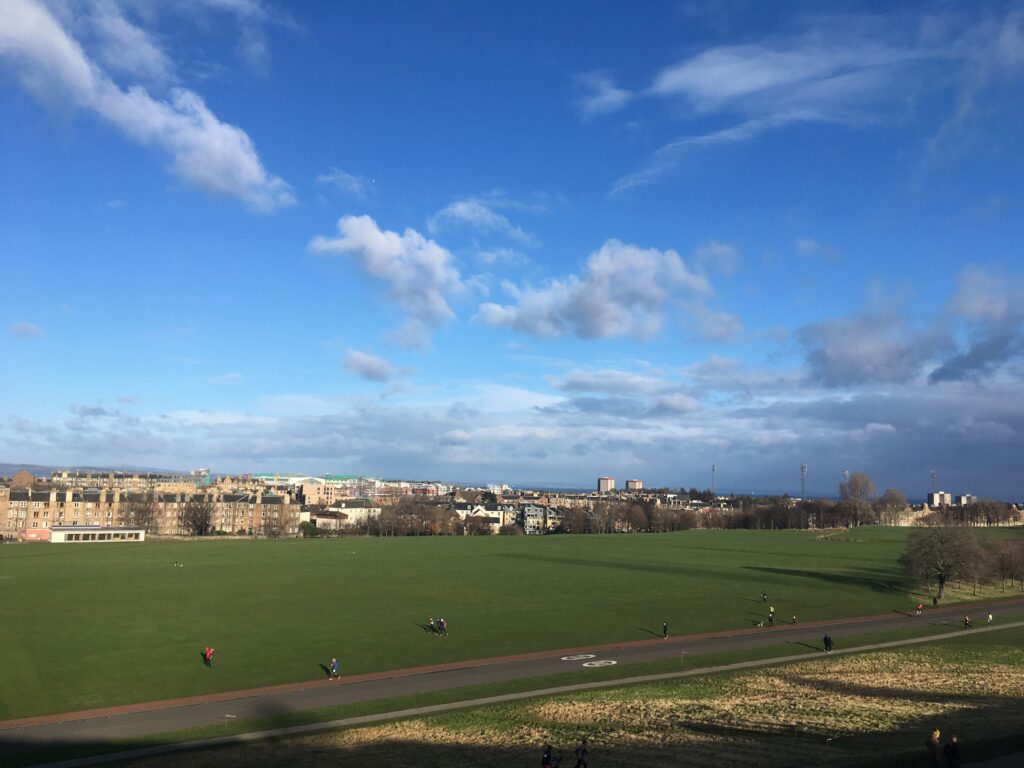

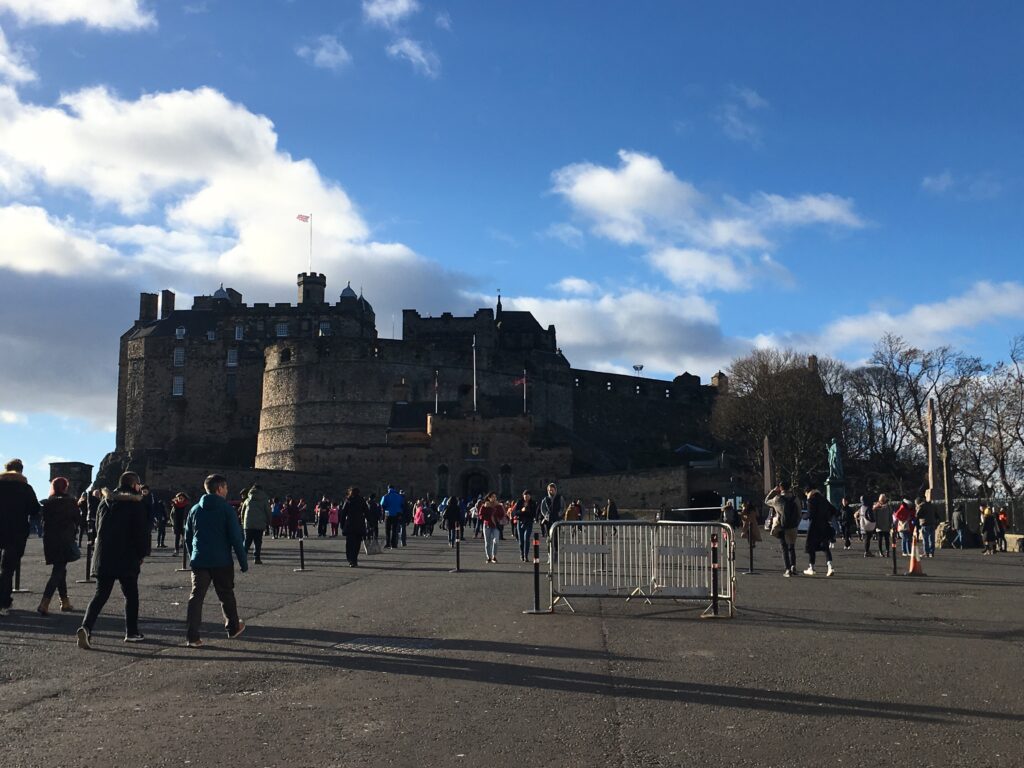
Elie, Fife
Elie is a beautiful village in Fife on the east coast of Scotland, not far from St Andrews. The beach is magnificent, lined by lovely houses, each of which has viewing platforms over the coast. The Ship Inn is a great place to stop for food, beer and good company.



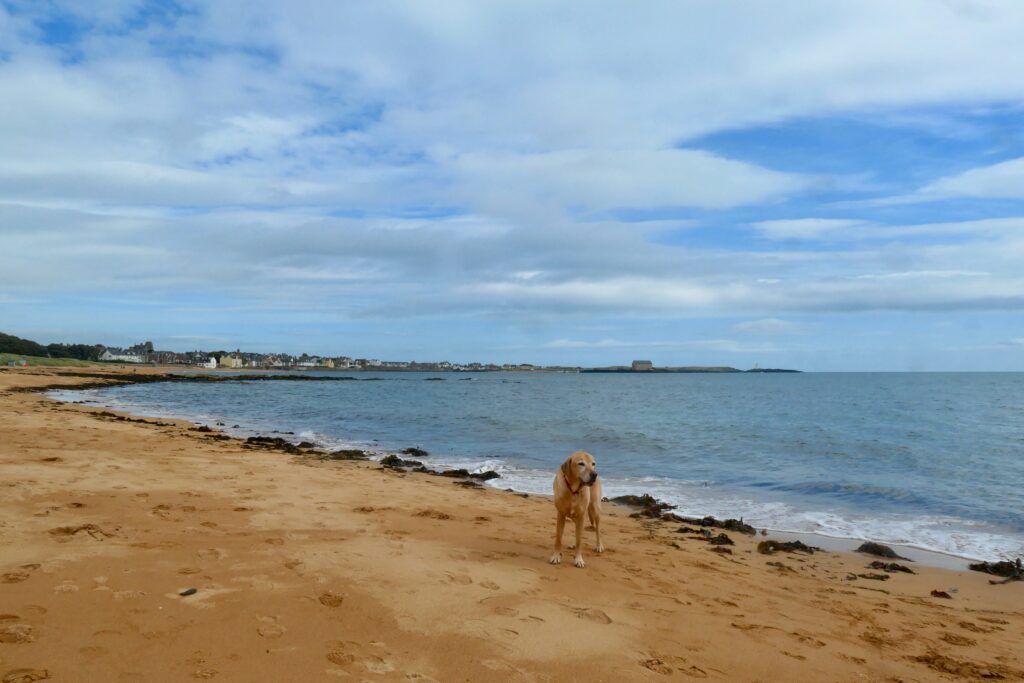



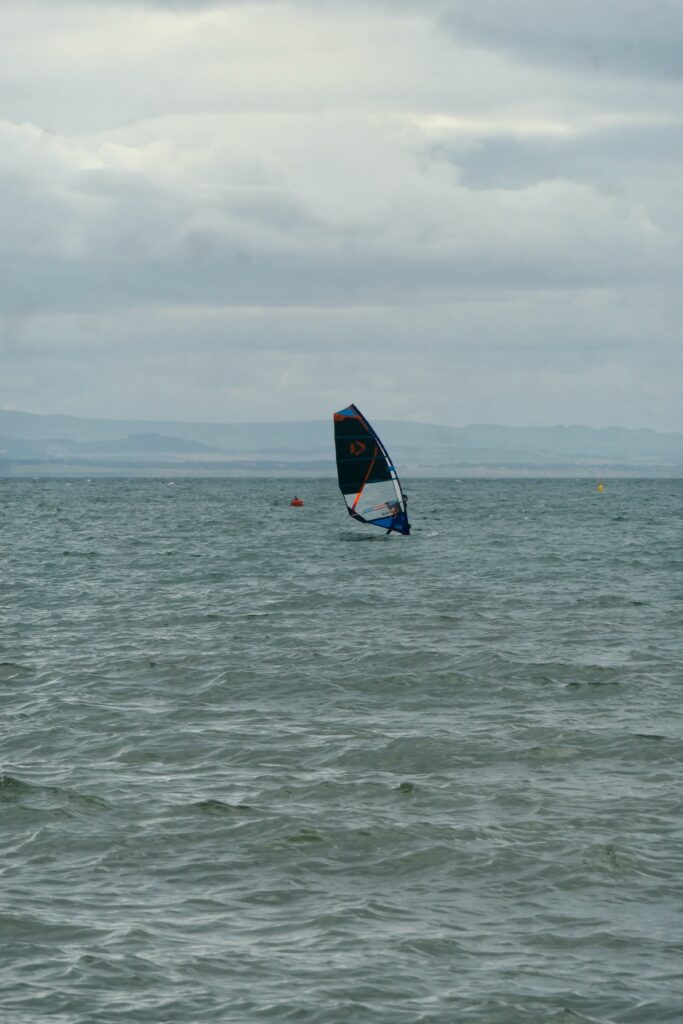



Eriboll
Eriboll lies on Loch Eriboll in the far north west of Scotland. the loch is 10 miles (16km) long. In 1945, the last surviving 33 German U-boats formally surrendered here, ending the Battle of the Atlantic.


Fort Augustus
Fort Augustus is a small, pretty village at the south western end of Loch Ness in the highlands of Scotland. Because of the loch, it is a very touristy area, and can be extremely busy. The loch itself is about 23 miles (37lm) long, and because of is great depth, is the largest lake in Great Britain. It is also home the the famous Loch Ness Monster.
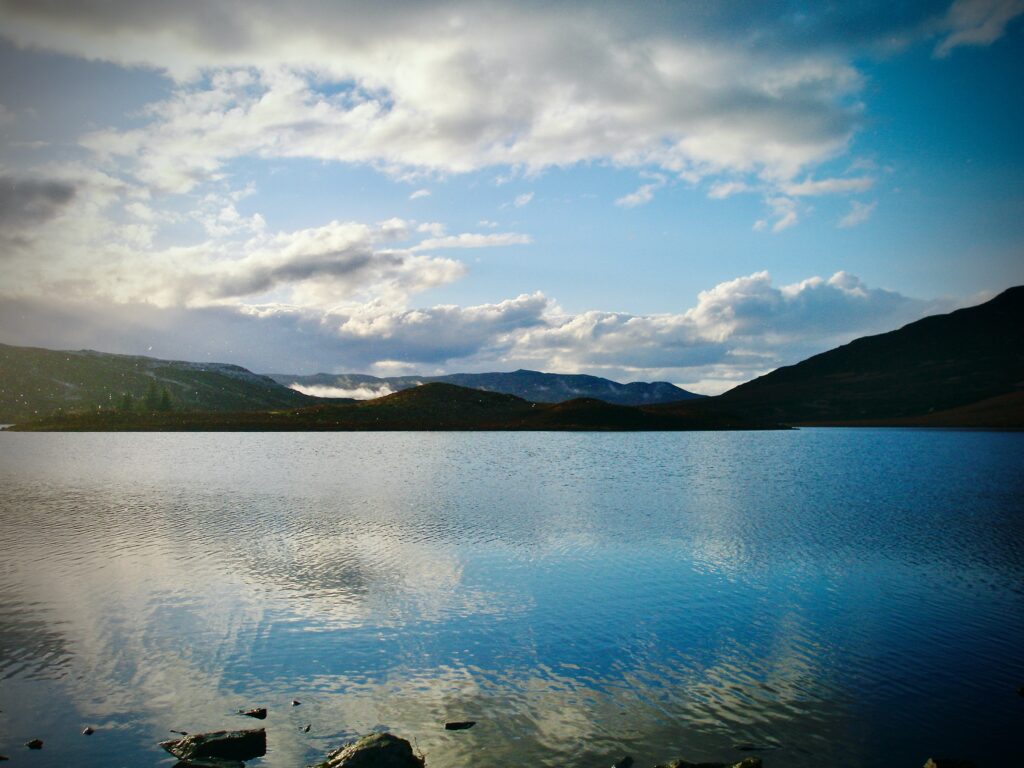
Glencoe
Glencoe is a stunning area in the highlands of Scotland in the west of the country. It can be extremely busy at peak periods, and traffic can be very slow. There are many hikes and walks in the area to take in the magnificent views, as well as mountains to climb.



Gruinard Beach
Gruinard Beach is a beautiful beach in Gruinard Bay on the west coast of Scotland. The beach overlooks the infamous Gruinard Island, which is just over ½ mile (1 km) from the shore. The island was used for biological warfare testing, in particular anthrax experiments. The testing contaminated the island for decades to come, and it wasn’t until 1990 that the government released the island back to its owners.

Inverary
Inverary is a small, pretty village on the shores of Loch Fyne in western Scotland. There are lots of greats walks in the area, especially on a sunny day.
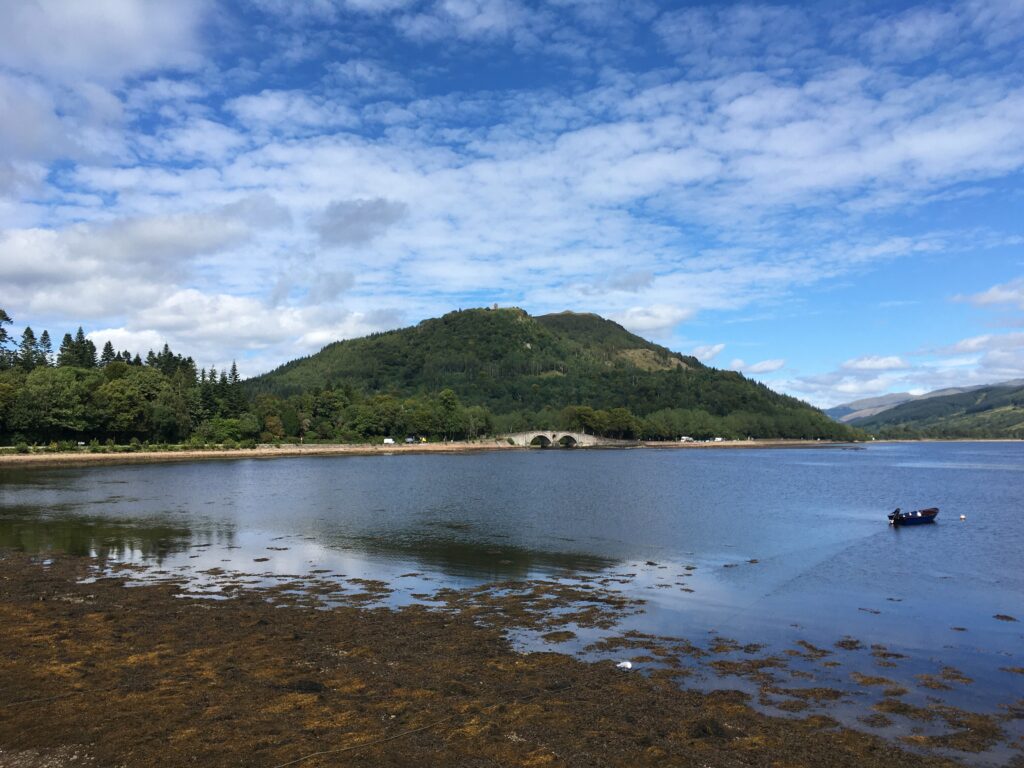
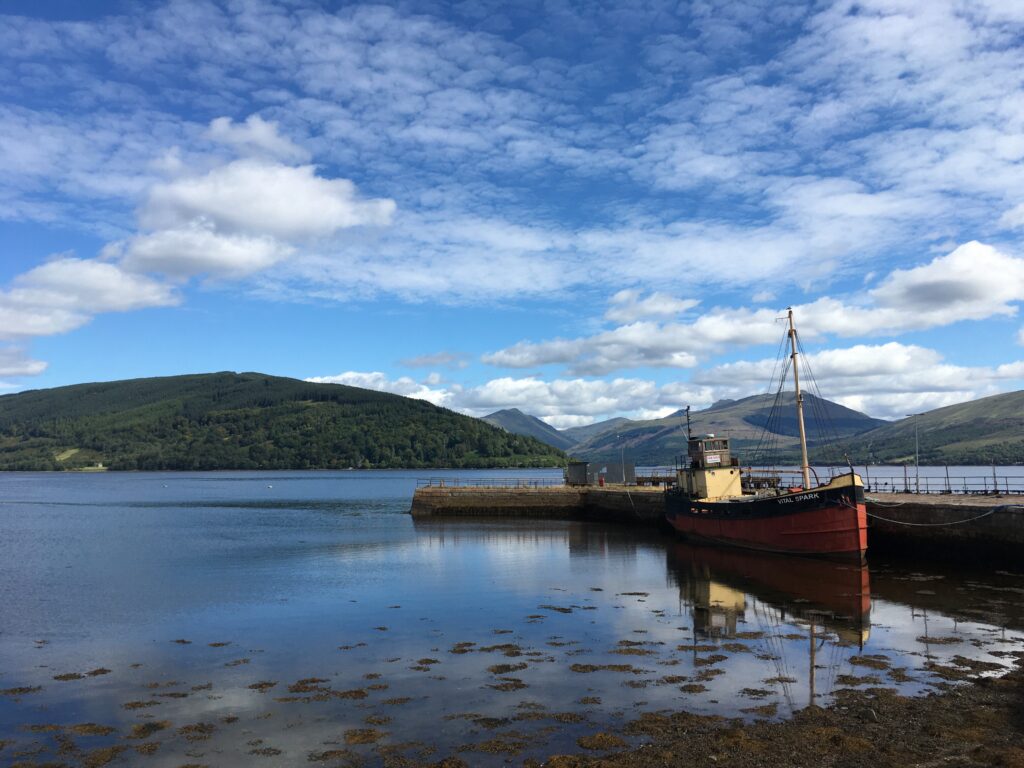
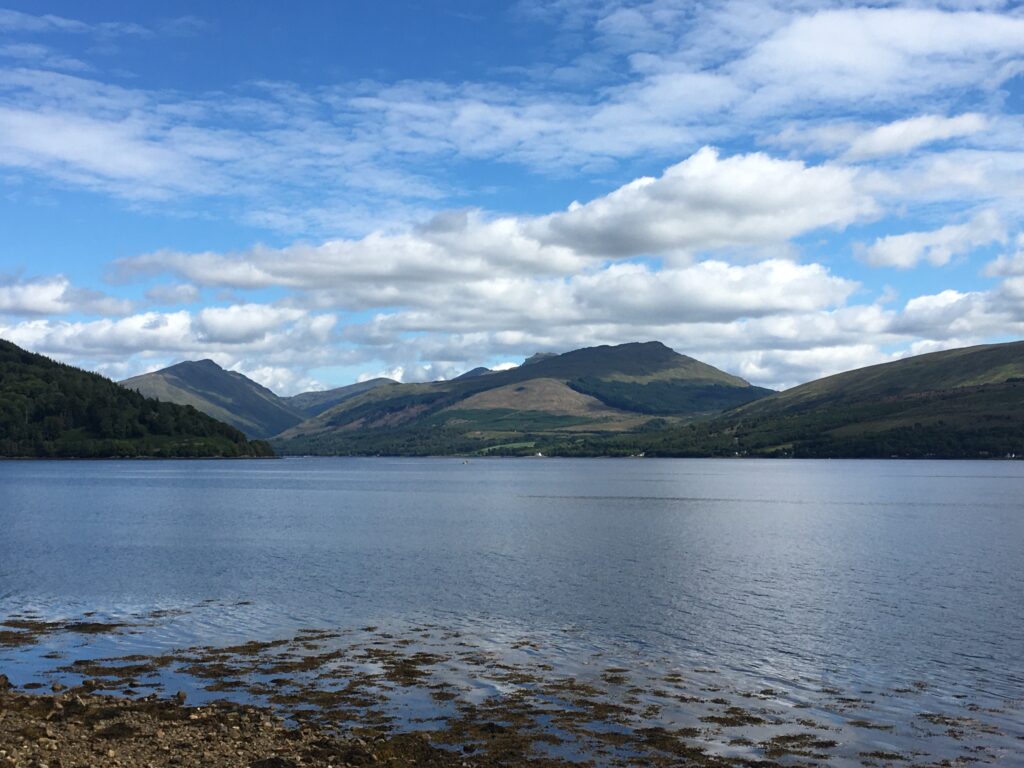

Inverbain
Inverbain is a beautiful viewpoint on the southern shore of Loch Shieldaig in the west of Scotland. There is a small island just off the shore which, during the Napoleonic Wars, never had its tall pines harvested to rig warships, and has now become a nature sanctuary.

Isle of Bute
The Isle of Bute is an island in the Firth of Clyde in west Scotland. Ferries connects the mainland at Wemyss bay or Colintraive to the Isle of Bute at Rothesay or Rhubodach respectively. There are some excellent beaches on the western side of the island, particularly those with a view towards the Isle of Arran. Seals can also be seen on the beaches.
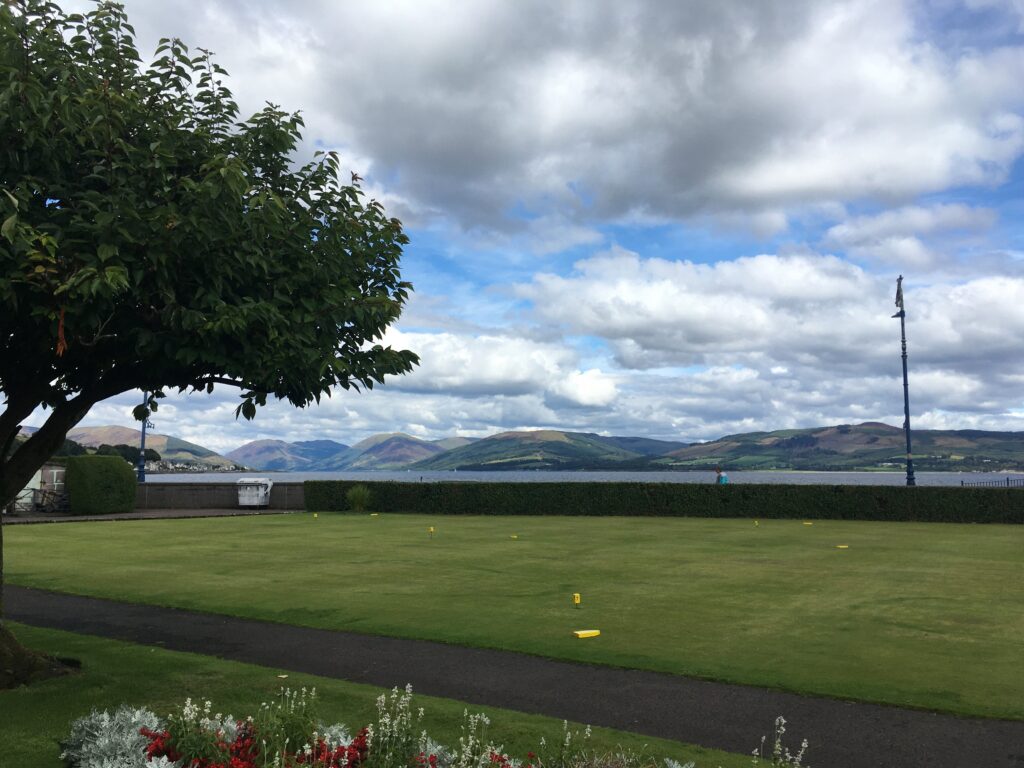
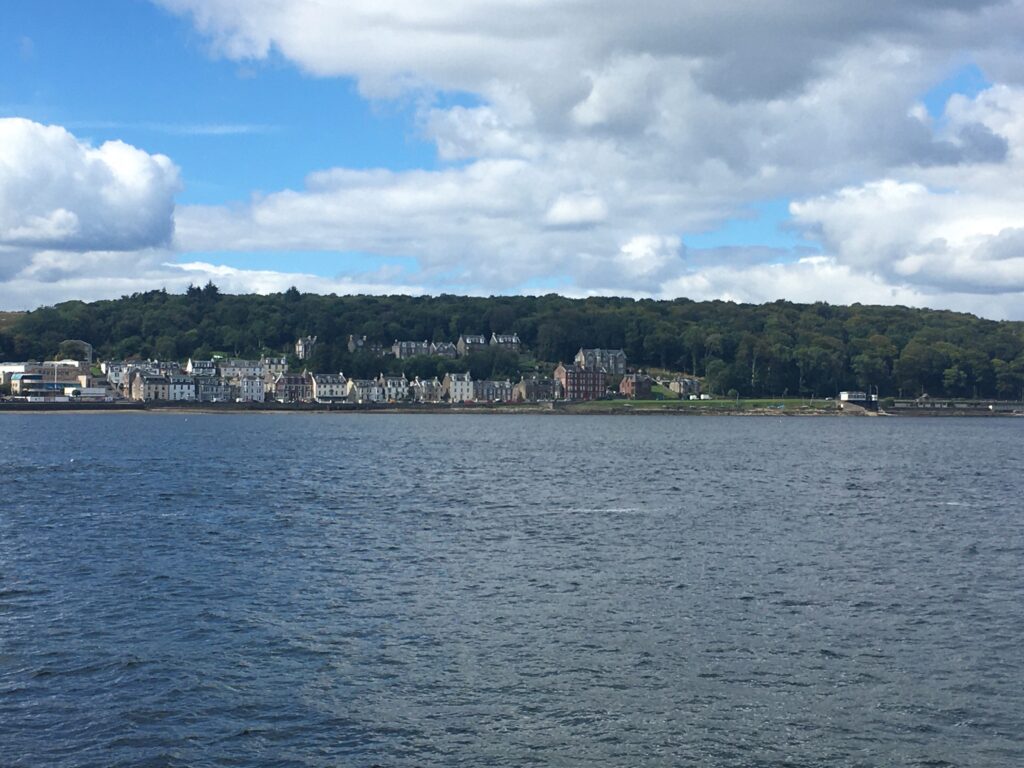
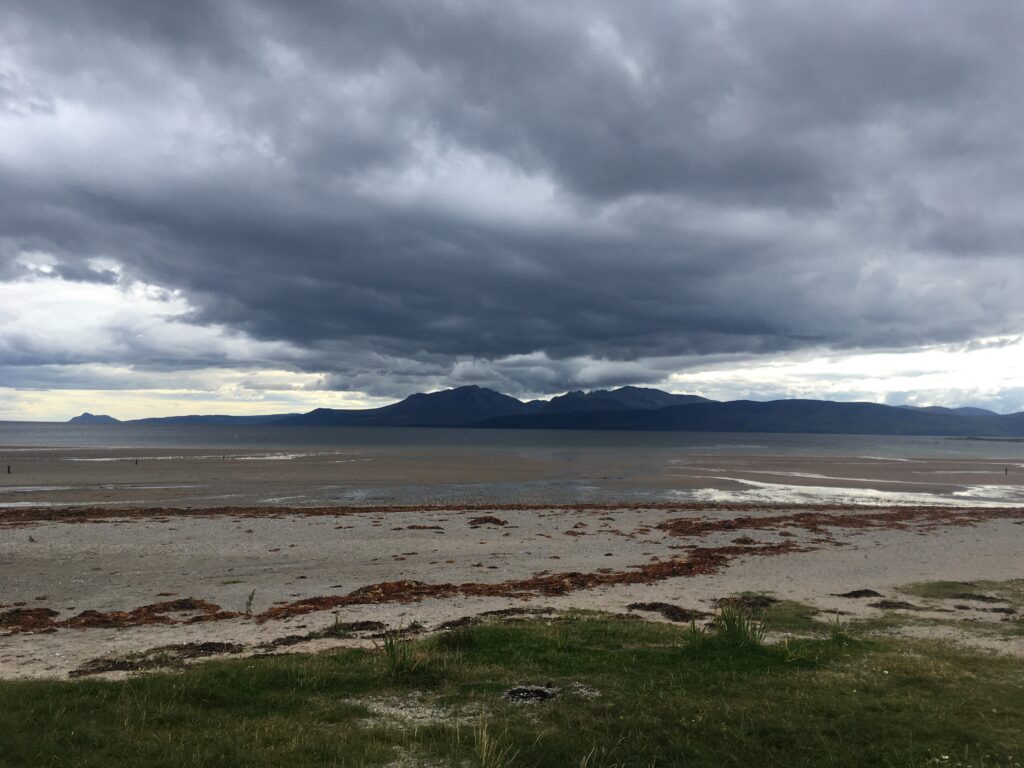
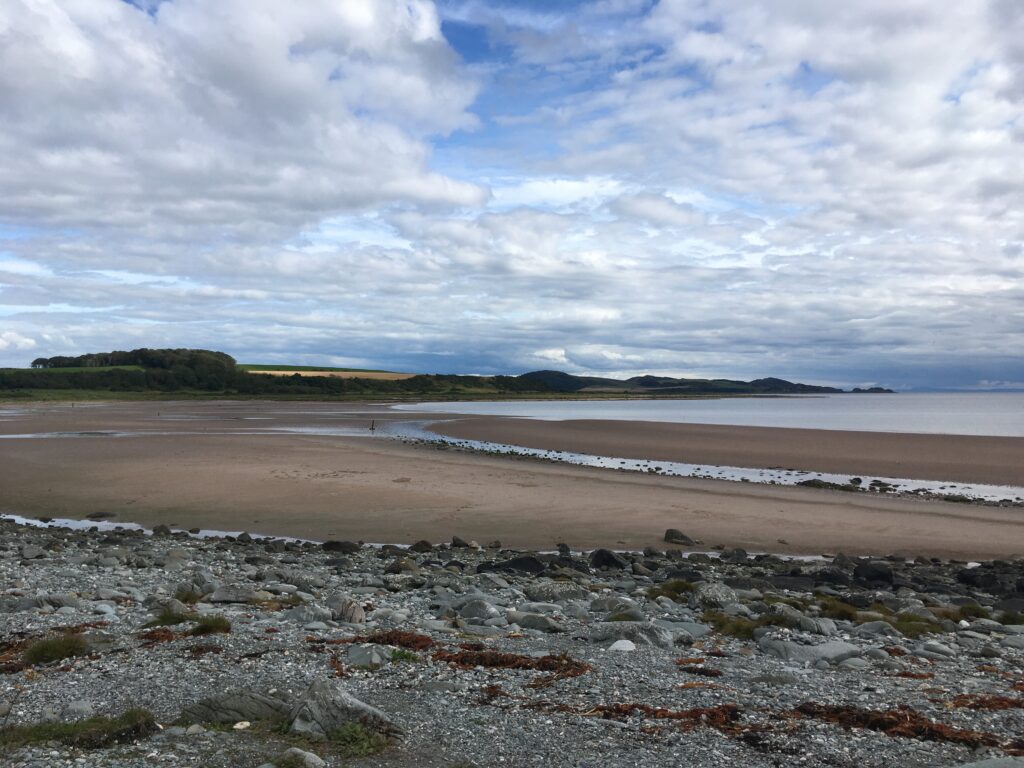
Isle of Skye
The Isle of Skye is part of the Inner Hebrides and is so full of stunning scenery that it is said you could easily spend a year exploring it!
We found Dunvegan on the Isle of Skye to be a particularly tranquil and beautiful place. Dunvegan is also the site of a lovely castle and the famous Giant Angus MacAskill Museum; Angus MacAskill was the tallest non-pathological giant and the largest true giant in recorded history at 7 feet 9 inches (2.36 m).






John O’Groats
John O’Groats is a small village located in the north east of Scotland near to the northernmost point of mainland Scotland, Dunnet Head. It is a very touristy village, due to being the most distant point on the mainland from Land’s End in Cornwall, 876 miles (1,410km) away.
The name comes from a man called Jan de Groot, who operated the ferry from the Scottish mainland to Orkney in then 15th century.

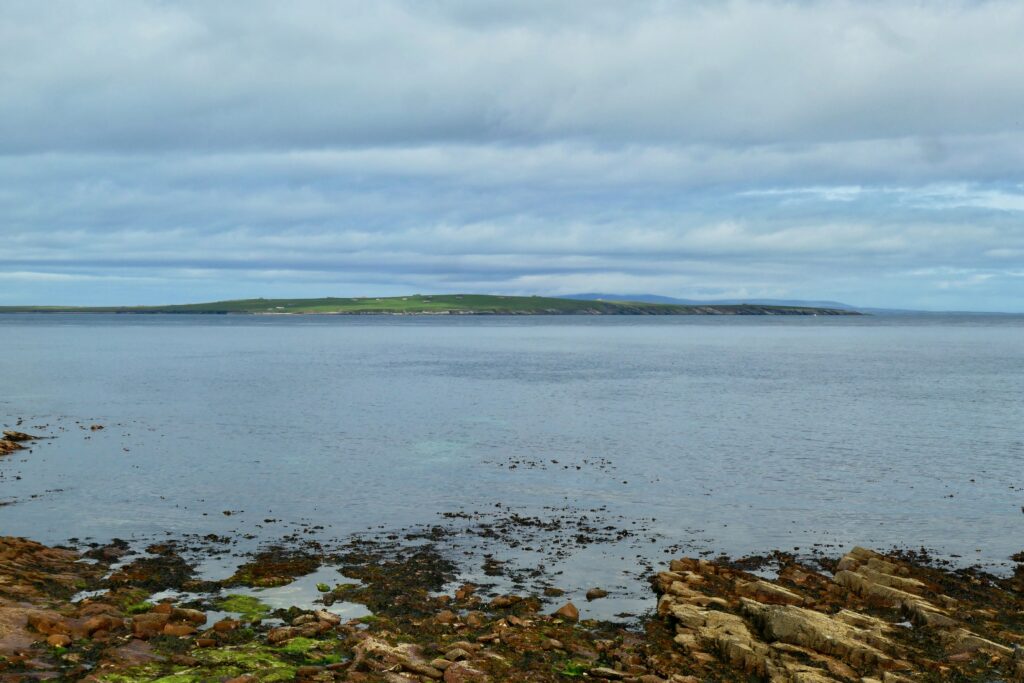
Lochcarron, Scotland
Lochcarron is a small village located on the shores of Loch Carron in the north west of Scotland. There’s loads of great hiking trails in the area, and it’s pretty close to the stunning area around Applecross.


Loch Leven
Loch Leven is a beautiful lake in the highlands of Scotland; not to be confused with Loch Leven near to Perth in Scotland. Glencoe village sits on its southern shore. The loch is 8¾ miles (14km) long by just over 1 mile (1.6 km) wide at its widest.
The Munro, Sgurr na Ciche, is located on the southern shore, and is 3,410 ft (1,040m) above sea level. The Munro is the wettest place in the UK, with an annual rainfall average of 200 in (5m)!


Loch Lomond and Balloch Castle
Loch lomond is a beautiful lake located in the west of Scotland in the Loch Lomond and The Trossachs National Park. At 22½ miles (36½km) long and up to 5 miles (8km) wide, its is the largest lake in Great Britain.
The mountain, Ben Lomond, sits on the eastern shore of Loch Lomond, and is 3,196 ft (974m) above sea level.
Balloch castle sits in a country park at the southern end of Loch Lomond. The original castle was built in the mid 13th century, and was demolished in the 19th century to make way for the present castle.




Loch Torridon
Loch Torridon is a stunning area located north of Applecross on the west coast of Scotland. The spectacular scenery is dramatically enhanced by the Torridon hills, many of which are Munros, due to being over 300ft (915m) in height above sea level. The peaks in Torridon hills sit on some of the oldest rocks in the UK, at 3.0–1.7 billion years old.




Loch Tulla
Loch Tulla lies in the west of Scotland near Glen Coe. The loch is 2½ miles (4km) in length and ½ mile (0.8km) wide. There are some great walks in the area that are well worth the effort, providing som great views … given the right weather conditions 🙂

St Andrews, Fife
St Andrews is a magnificent town on the east coast of Scotland, dominated by Scotland’s oldest university and its multitude of students. Full of cafes and restaurants, and with a castle, an abbey and a beach, it’s definitely worth a visit.



Tighnabruaich
Tighnabruaich is a lovely, picturesque, small village on the Kyles of Bute in the west of Scotland. The village is popular for sailing and even has its own sailing school.
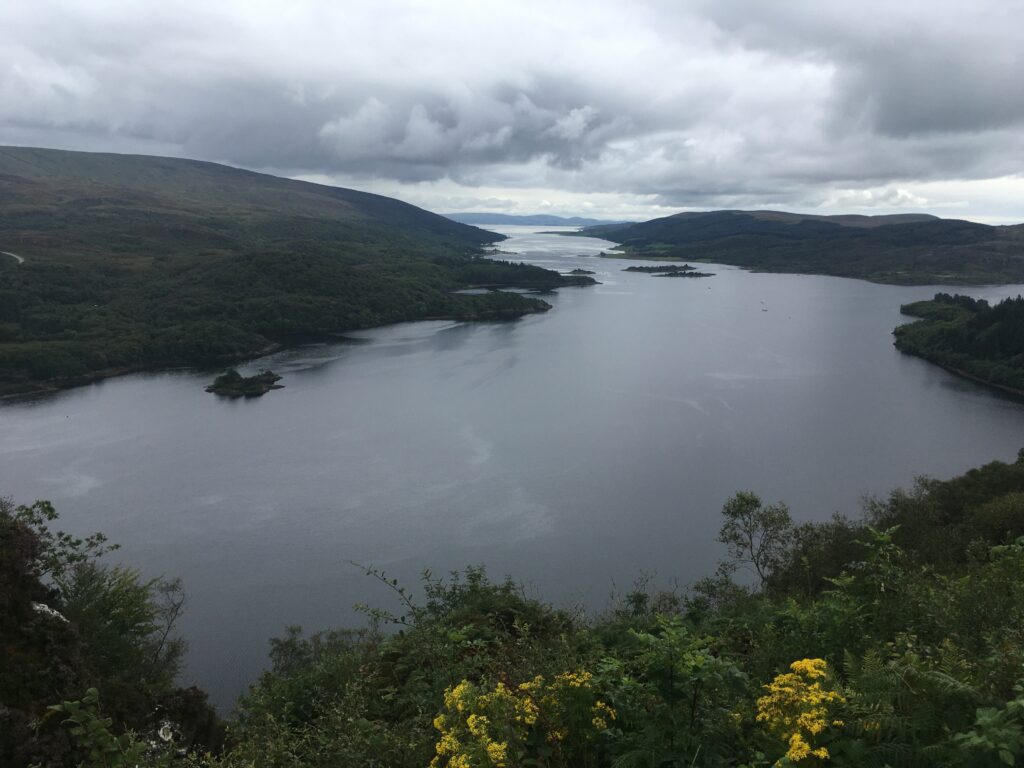
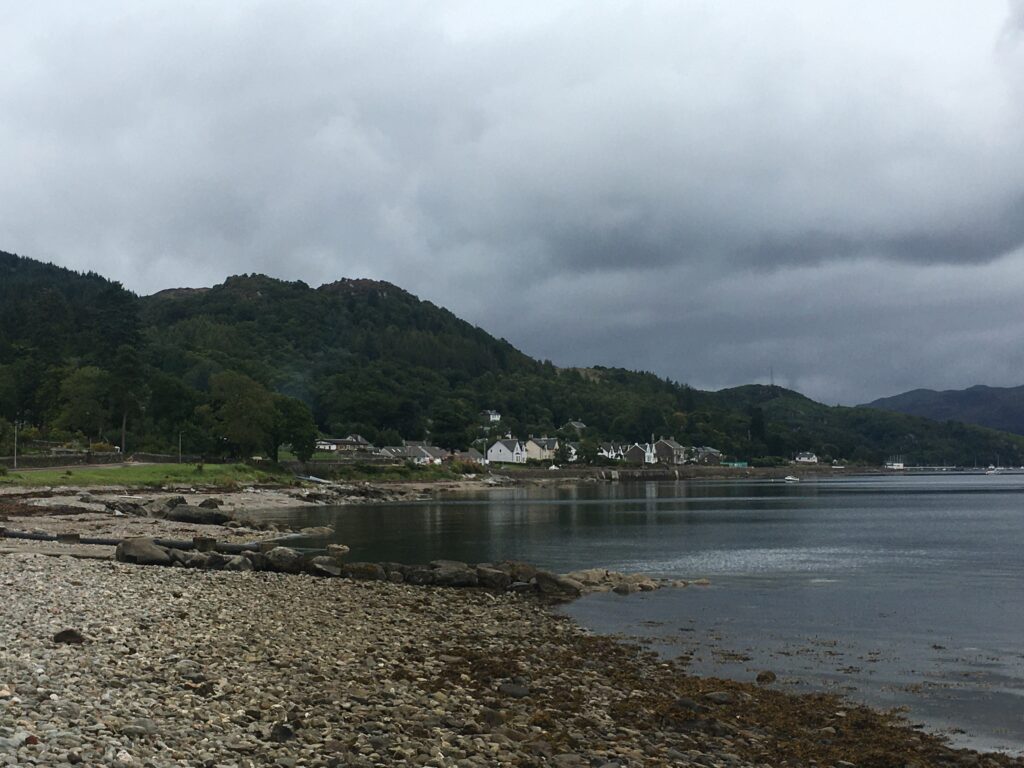
Unapool
Unapool is a tiny village on the west coast of Scotland, and is surrounded by three lochs – Loch a Chairn Bhain, Loch Gleann Dubh and Loch Glencoul. The amazing curved Kylesku Bridge is located here, replacing the ferry to Kylesku. Mount Cnoc na Cairidh lies just outside Unapool and is 171 metres high.


What’s it like to drive in Scotland?
Driving in Scotland is mostly a leisurely affair due to the population being centred mostly on the central belt of Edinburgh – Glasgow, and the relative sparsity of people across the rest of the country. Compared to England, most drivers are relatively calm, even in major cities and on motorways. However, as across the rest of the UK, many poor drivers tend to sit in the middle lane on motorways or in the overtaking lane on dual carriageways, hindering the flow of traffic. The use of the car horn is not widely used outside of actual warnings or emergencies.
What are the speed limits in Scotland?
They drive on the left hand side of the road in Scotland.
The speed limits for cars in Scotland are:
- 30 mph (50 km/h) for urban driving
- 60 mph (100 km/h) outside of built up areas
- 70 mph (110 km/h) on dual carriageways
- 70 mph (110 km/h) on motorways
We’ve also created a dedicated page to driving abroad, which you might find helpful 🙂
What currency do they use in Scotland?
Across the whole of the United Kingdom they use pound sterling. The use of credit / debit cards is now widespread, although not guaranteed – have some cash just in case, particularly in cafés and restaurants. ApplePay is widely accepted in petrol stations and most stores in major towns. Traveller’s cheques are accepted. There are lots of ATMs. Euros are also sometimes accepted in Edinburgh, although exchange rates are often poor in restaurants etc.
You should make yourself aware of the amount that your bank charges you for using credit and debit cards abroad. Often credit cards are cheaper for purchasing items directly, and for withdrawing cash from ATMs.
What language do they speak in Scotland?
They speak English in Scotland, although there are regional languages in Scotland, including Scots and Scots Gaelic. As a multicultural nation, the main cities have large populations that speak many languages from around the world.
What time zone is Scotland in?
Remember, when you’re planning your next trip to take a look at what time zone it’s in.
Do I need a visa to visit Scotland?
We’ve created a dedicated, more comprehensive page on visas, which you should find helpful. Check it out!
Is wild camping legal inScotland?
Yes, wild camping is fine in Scotland, as long as it’s not on private land or fenced off land. In reality, much of the land in Scotland is privately owned and thus opportunities for wild camping are not as common as you might at first think.
What plug / socket type do they use in Scotland?
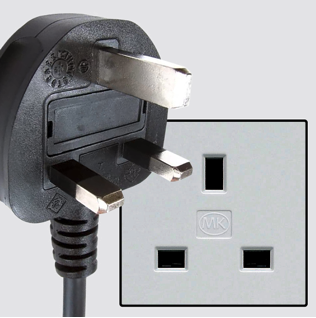
In Scotland they use plug / socket type G.
Health issues in Scotland
Is it safe to drink water in Scotland?
Yes, it is safe to drink tap water in Scotland. Bottled water is also readily available across Scotland.
What vaccinations are required for Scotland?
This NHS website is kept up to date with all relevant information on vaccinations in Scotland.
Phones in Scotland
What is the country calling code for Scotland?
The country calling code for the Scotland is +44
What are the emergency phone numbers in Scotland?
- The emergency number for police in Scotland is: 999 / 112
- In Scotland, the emergency number for England is: 999 / 112
- The emergency number for fire in Scotland is: 999 / 112
If you’ve got some useful info that you’d like to share, let us know!
Don’t forget to check out all the other pictures!
